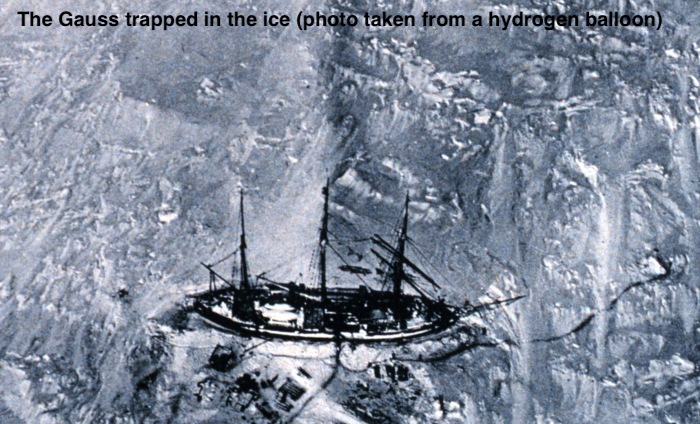Scott’s Balloon

On Tuesday, February 4th 1902 the crew of Scott’s ship Discovery were anchored in a small cove in McMurdo Sound, Antarctica.
The day before they had off-loaded 17 cylinders and other equipment. The cylinders contained hydrogen. At 11 am Scott was the first man to ascend by balloon in Antarctica, a flight that almost proved fatal when he threw out too much ballast.
He rose to a height of 180 m (600 ft) and all he could see was whiteness stretching indefinitely into the distance. Shackleton, his third in command, was the next to go up and took the first photos of the ice shelf, thoroughly enjoying himself in the process.
Only one other flight was managed by Able Seaman Heald before the wind came up and further flights were abandoned. The balloon, affectionately known as Eva, developed tears in its fabric and became un-serviceable thus ending a brief history of Antarctic ballooning.
At a cost of £1300 pounds it was probably a waste of money given its limited usefulness. However, it was a first, and humans have to try things in the spirit of adventure, so I wouldn’t call it a failure. Let’s give them credit for trying. They were very brave men.
The German Balloon

Though Sir Robert Falcon Scott beat him by a small margin, Professor Erick Von Drygalski was the second person to ascend in a hydrogen balloon over Antarctica during the German National Antarctic Expedition (1901-1903). The balloon was only used twice but they did manage to get some great photos and reached a height of 490 metres (1607 ft)
Von Drygalski’s ship (Gauss) had become trapped in the ice about 75km from the mainland and they would spend the winter there, but the scientists made good use of their time, carrying out a vast amount of scientific work on the ice as well as some sledge journeys inland.
